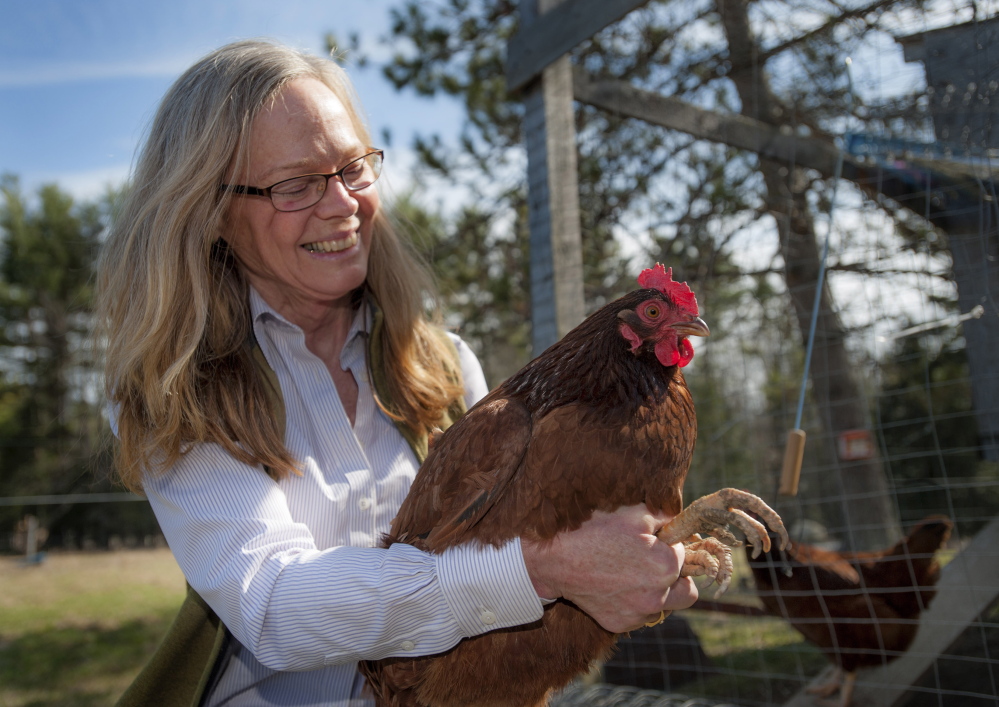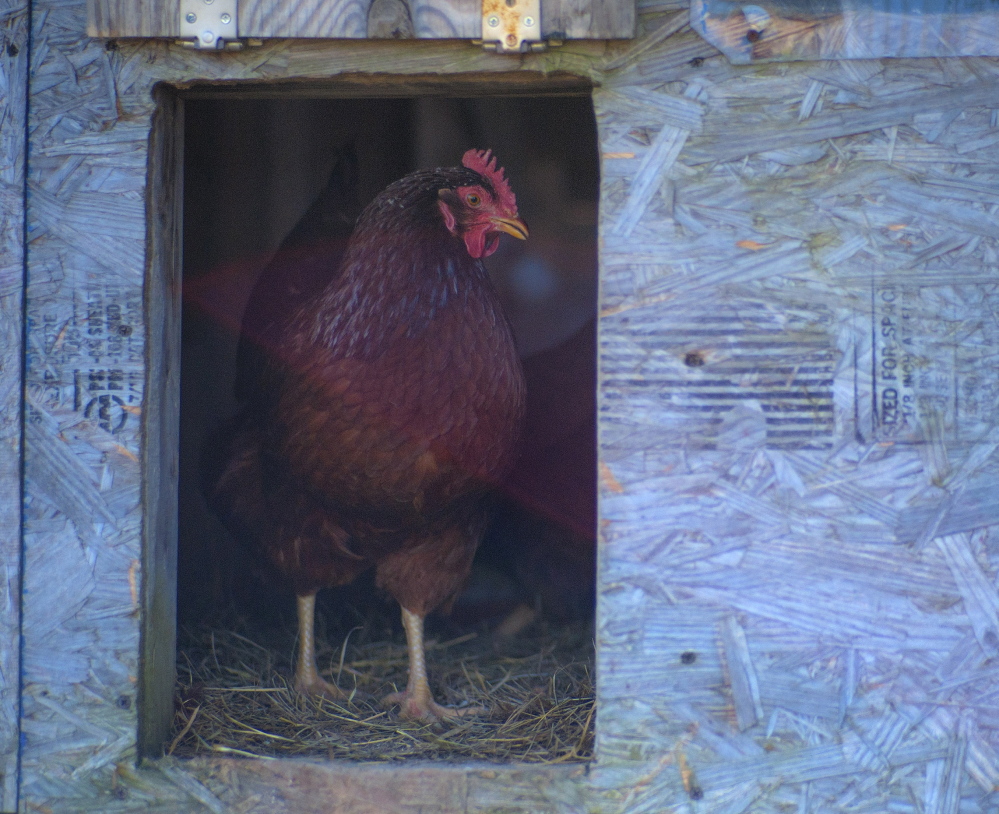Veterinarian Anne Lichtenwalner has a mental pie chart to explain the work she does for the University of Maine’s Cooperative Extension. Sixty percent of the time she is running the extension’s diagnostic lab and giving educational seminars for veterinarians, livestock producers and backyard farmers. Thirty-five percent of her time goes to research. The remaining 5 percent of the time, she’s teaching UMaine students at the School of Food and Agriculture. But it might be easiest to think of her as the person who can give you expert advice on what to do about your dairy cow’s mastitis or your backyard chicken’s prolapsed vent. We caught up with her just before she headed off to Alaska for the 48th North American Moose Conference and Workshop.
HOW MUCH TIME DOES SHE SPEND WITH THE GENERAL PUBLIC? An ever-increasing amount. She might hear from five people a week with say, chicken-related questions that the cat-and-dog vet down the street can’t answer. “More and more people own some livestock. Maybe they only have six chickens, but these are food animals, and so there is a whole different ball game.”
WAYS SHE’S NOT LIKE DR. DOOLITTLE: People tend to send her dead animals. “Someone may send in a chicken to me, and I’ll do the necropsy.” Or she’s culturing bacterial samples for livestock. “So then we can very quickly tell people what kind of antibiotic they might want to use.”
HER LAST CHICKEN-RELATED QUESTION: “This morning a woman emailed me about having used an over-the-counter remedy on her chicken’s skin. Pine tar, which is an old, old, old animal remedy. And it has very small amounts of a carcinogen in it.” So now she is not sure what to do: Can she eat the chicken? Or the eggs?
LENGTH OF TIME IN MAINE: Six years. And counting; she feels like she fits in. “I’m a Pacific-Northwest person and I feel comfortable here. The Portland-to-Portland thing is hilarious, the way people go back and forth.”
HOW DID SHE END UP IN MAINE? She was interviewing for a job in Hawaii and another in Maine. Her brother, who raised his kids in Damariscotta, cast a vote for the less paradisiacal place. “He said, ‘Oh gosh, you’ll love Maine, you have to go there.’”
SO, A MOOSE CONFERENCE? It’s a new specialty. She’ll be talking about a report she recently authored on tapeworm-related lung cysts in moose in Alces, a scientific journal devoted to moose (“Alces” is the scientific name for the species). And she is partnering with Inland Fisheries and Wildlife to look “at moose survival in a more objective way.”
WHAT DOES THAT MEAN? “Well, you certainly don’t usually know exactly how many of them make it through the winter. We’ve radio collared about 60 of them, and are going to have numbers. Inland Fisheries and Wildlife has their own biologist, so they find the animal and do the field necropsy. We get pictures and bits and pieces of this and that and we test for various and sundry things.”
YES, SHE HAS SEEN THE VIRAL VIDEOS OF ANGRY MOOSE ATTACKS, INCLUDING THE SNOWMOBILE CHASE. “It made me mad,” she said. “You’ve got to give the moose some space. Their lives are tough, and this time of year is a very delicate time. They have been living off storage fat and eating marginally all winter, and then they get these winter ticks that suck a lot of their blood. So they are anemic. All you need is a snowmobile chasing you when you’re anemic and hungry.”
Send questions/comments to the editors.





Comments are no longer available on this story